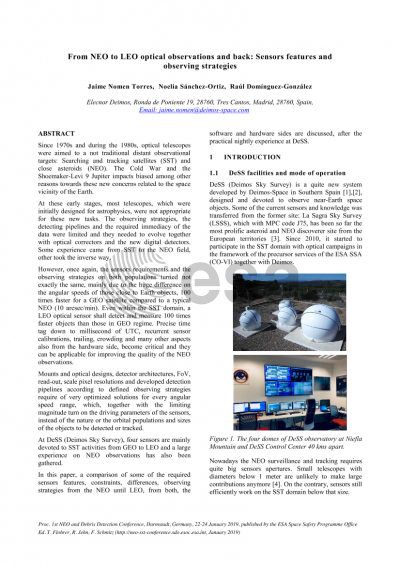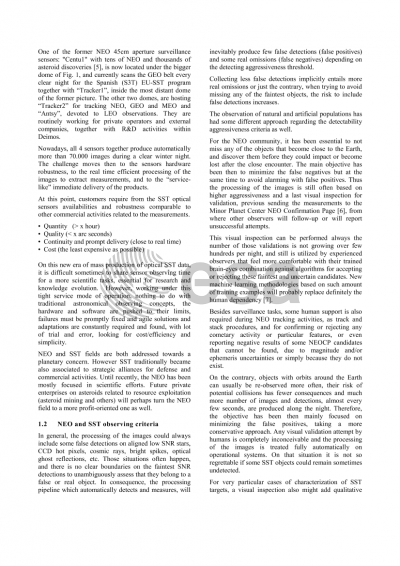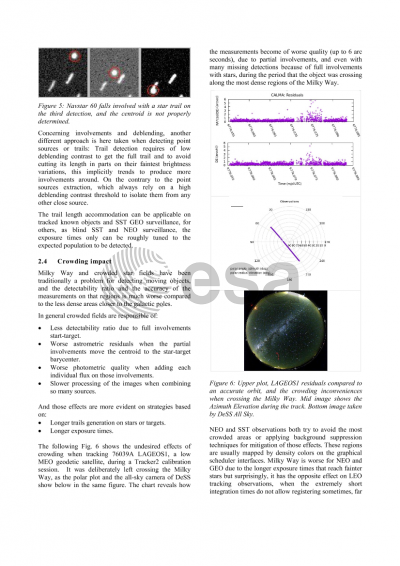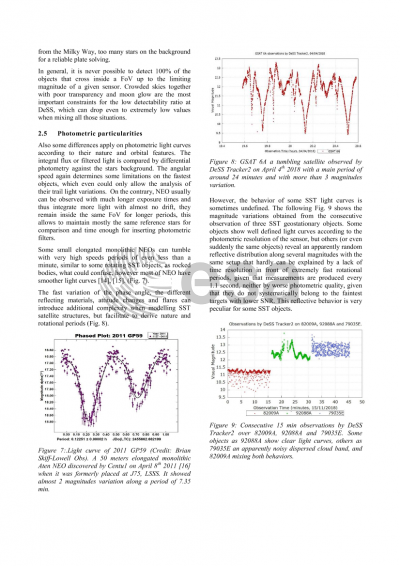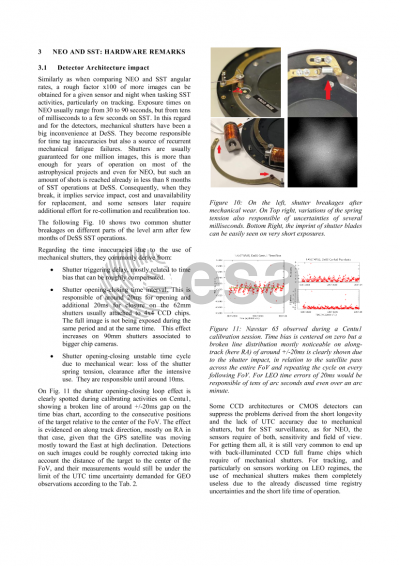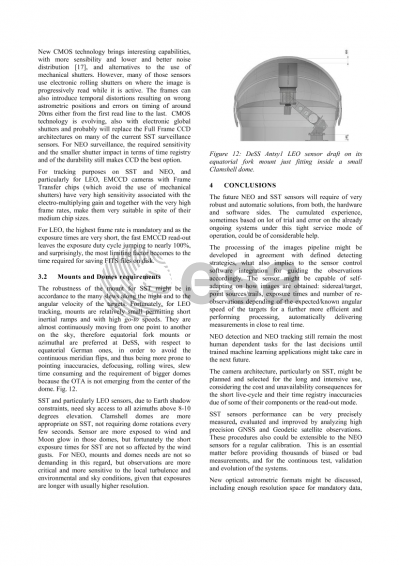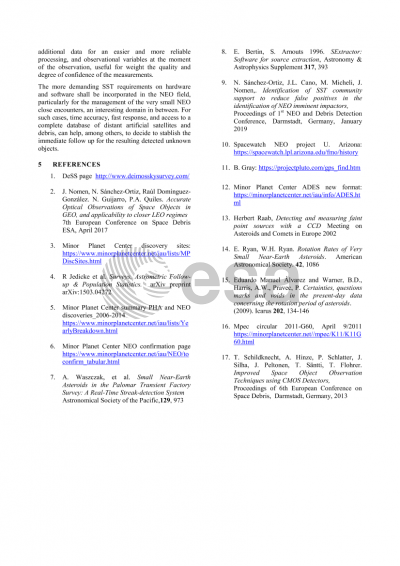Document details
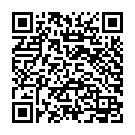
Abstract
Since 1970s and during the 1980s, optical telescopes were aimed to a not traditional distant observational targets: Searching and tracking satellites (SST) and close asteroids (NEO). The Cold War and the Shoemaker-Levi 9 Jupiter impacts biased among other reasons towards these new concerns related to the space vicinity of the Earth.
At these early stages, most telescopes, which were initially designed for astrophysics, were not appropriate. The observing strategies, the detecting pipelines and the required immediacy of the data were limited and they needed to evolve together with optical correctors and the new digital detectors. Some experience came from SST to the NEO field, other took the inverse way.
However, once more, the sensors requirements and the observing strategies on both populations turns not exactly the same, mainly due to the huge difference on the angular speeds of those close to Earth objects, 100 times faster for a GEO compared to a typical NEO (10 arcsec/minute). Even within the SST domain, a LEO optical sensor shall be designed to detect and measure 100 times faster objects than those in GEO regime. Precise time tag down to millisecond of UTC, recurrent sensor calibrations, trailing and many other aspects become critical and they can be applicable and improve the quality of the NEO observations.
Mounts and optical designs, detector architectures, FoV, read-out, scale pixel resolutions and developed detection pipelines according to defined observing strategies require of very optimized solutions for every angular speed range, which is the driving parameter, instead of the nature or the orbital population of the objects to be detected or tracked.
At DeSS (Deimos Sky Survey), four sensors are mainly devoted to SST activities from GEO to LEO and a large experience on NEO observations has been also gathered.
In this paper, a comparison of some of the required sensors features, constraints, differences, particular requirements and observing strategies from the NEO until the fastest LEO speeds, are described, after the practical nightly experience at DeSS.
Preview
